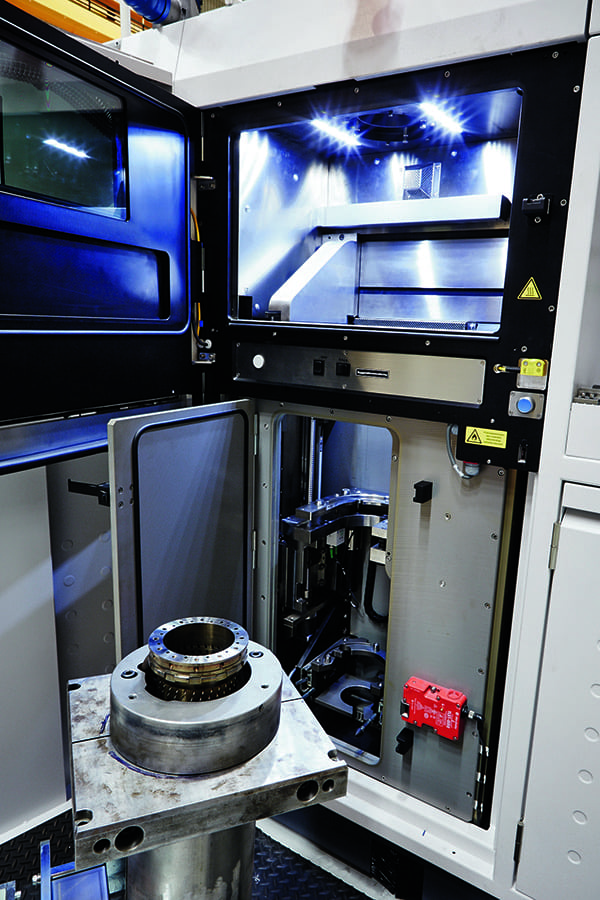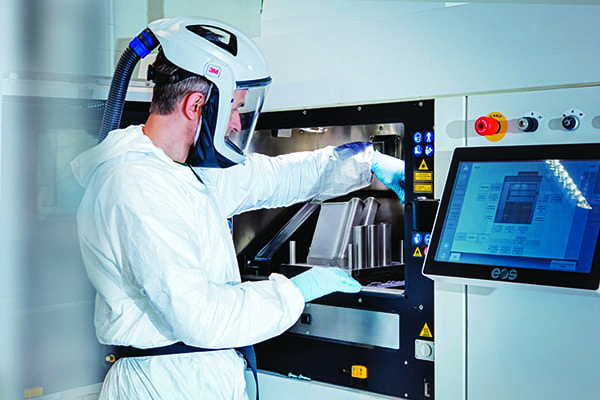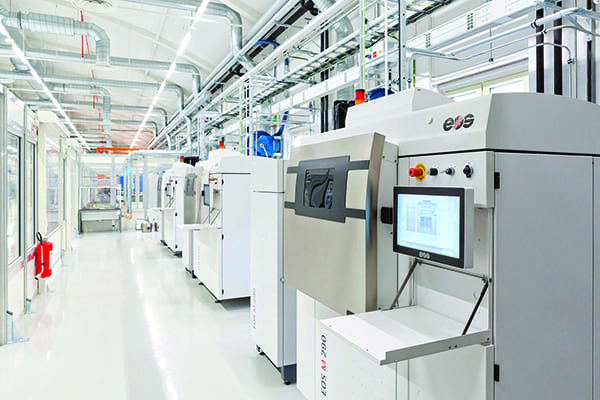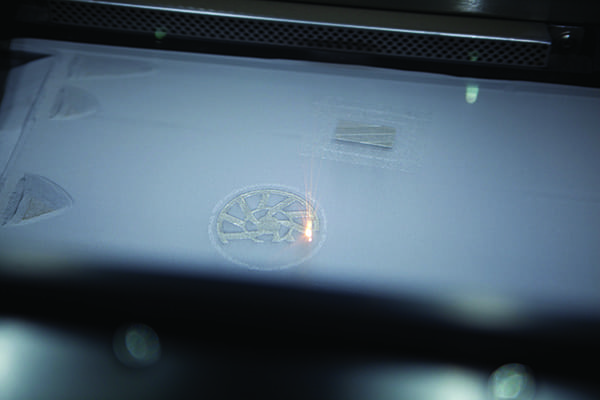3-D Printing: The Future of Manufacturing and Maintenance
Power plants are complex systems with countless moving parts, and in turn, countless opportunities for things to go wrong. With the advent of 3-D printing technology, repairing or replacing those moving parts has gotten a little bit easier. The use of additive manufacturing to solve complex problems for gas turbines is gaining steam in the power industry.
Custom gas turbine components manufactured in a fraction of the time required using traditional methods and at a reasonable cost: it sounds too good to be true, but with the advent of 3-D printing, Siemens and GE say it’s the way of the future.
Both companies have been working for years to perfect their 3-D printing—also called additive manufacturing—offerings and both have seen remarkable results.
Siemens has been an active user of additive manufacturing since 1989, according to company press materials, but has really picked up its use of the technology more recently. In February 2016, the company opened a new production facility for 3-D printing in Finspång, Sweden (Figure 1), and the first 3-D printed component for a Siemens heavy-duty gas turbine entered into commercial operation in July 2016, according to the materials.
Siemens currently offers rapid prototyping of turbine vanes and blades as well as combustion parts, rapid repair of burner tips for the SGT-700/SGT-800 models, rapid manufacturing of burner fronts for the SGT-700/SGT-800 models, and spare burner heads on demand for the SGT-1000F.
Even more recently, Siemens has successfully reverse engineered an impeller for a fire protection pump in Slovenia’s Krško nuclear power plant, marking the first time a 3-D-printed part has been installed in a nuclear plant.
Siemens isn’t the only company jumping on this bandwagon, though. In May 2016, GE Oil & Gas opened an additive manufacturing line to 3-D print components. “We use laser technology to 3-D print fuel burners for gas turbines combustion chambers in our new additive manufacturing line in Talamona. … This includes the entire NovaLT family and the new LM9000,” Massimiliano Cecconi, materials and manufacturing technologies executive at GE Oil & Gas, told POWER.
In addition to its current operations, GE has recently entered into a technology cooperation agreement with Total Refining & Chemicals to introduce additive manufacturing into the production of centrifugal pump impellers. “The agreement represents a milestone in the process of adopting Additive Manufacturing as part of day-to-day operations in the production of equipment for oil and gas applications, including downstream,” Cecconi said.
The Basics of Additive Manufacturing
3-D printing is a relatively new technology, but that doesn’t mean that it lacks variety. There are a number of different printing processes for manufacturers to choose from, each with its set of benefits and drawbacks.
Siemens relies on a process called selective laser melting (SLM) to produce its parts, although the company has also explored laser metal deposition (LMD) for its additive manufacturing uses.
GE uses direct metal laser melting (DMLM) in its Talamona additive manufacturing line. Electron beam melting (EBM) is another well-known 3-D printing process and is in use at other GE plants.
SLM and DMLM. The SLM and DMLM processes are essentially the same. In this process, a layer of metal powder is laid onto a plate in the 3-D printer. The printer then reads from a 3-D computer-aided design (CAD) file that has been sliced into thin layers. A high-powered laser selectively melts the powder (Figure 2), building the component layer by layer.
Siemens selected SLM as its 3-D printing process of choice because it offers a high level of accuracy, Vladimir Navrotsky, chief technology officer at Siemens Distributed Generation Service Business Unit, told POWER. “Currently we like to use this technology for the hot gas components because we need to have a high precision and minimum machining afterward so that the components will be more or less ready for the application,” Navrotsky said.
GE has similar reasons for choosing the DMLM process. “This process has the advantage of the best dimensional accuracy compared to other additive processes, and it is also the most widely known and tested. A lot of different alloys have been developed and qualified for it,” Cecconi said.
LMD. The LMD process also uses metal powder for the 3-D printing process, but instead of the powder being laid on a plate, it is supplied from a nozzle and injected directly into the beam of the laser.
According to Navrotsky, LMD is not without its drawbacks. “You can do much bigger components much quicker,” he said. “But then you need to do the final machining.”
EBM. EBM is very similar to the SLM process, differing only in that the EBM process uses an electron beam as opposed to a laser. EMB is somewhat more limited in that it can only be used with a limited number of metals.
“At GE, we’re exploring and testing many different additive processes as every one of them has specific pros and cons that make them more or less suitable for specific industrial applications,” Cecconi said.
Pros of 3-D Printing
The advent of additive manufacturing has opened a whole new world to the energy industry. While there are certainly limitations to what can be achieved through 3-D printing, the technology has allowed engineers to address longstanding difficulties in innovative ways.
“Additive manufacturing allows us to develop parts and products more efficiently, with better performance and cost-effectively, and it accelerates the speed at which we can bring products to market: production times are drastically reduced—the finished product can be completed in weeks instead of months, significantly reducing production cycles, which ultimately benefits the customer,” Cecconi explained.
One of the most significant advantages to the additive manufacturing process is its quick turnaround time. According to Siemens, pieces produced via additive manufacturing can be produced “up to 90 percent faster” than those produced through traditional means.
More specifically, Siemens boosts turnaround times 75% faster for research and development and prototyping, and lead times reduced up to 60% for burner tip repair (Figure 3).
 |
| 3. Speedy repair. Using additive manufacturing, Siemens can repair burner tips 60% faster than using traditional methods. Courtesy: Siemens |
“Recently, we did apply this technology for the design of new components—design and validation. Just to do the design of the blades and vanes it usually takes about one year and a half, two years, in order to do the design and get the prototype blade, which is custom,” Navrotsky said. “With one of our small engines, we in two months—instead of in two years or one year and a half—we did the design of the blade, and we did the manufacturing of the blade, and we put this blade into the engine in order to validate the improvement of the cooling design.”
Through its agreement with Total Refining & Chemicals, “GE Oil & Gas will use advanced manufacturing methods, such as 3-D laser scanning and DMLM, to 3-D print impellers on a 1/1 scale, leading to a significant reduction in lead time—from months to an average of three weeks from 3-D laser scanning availability—higher technology sophistication,” Cecconi said.
Additive manufacturing also removes many limitations of the traditional manufacturing process. As Navrotsky said: “If you can dream it, we can print it.”
Such was the case for the Krško nuclear power plant. The plant’s operators needed to replace a part of its fire protection pump. Unfortunately, that particular piece was no longer in production. The operators did not want to replace the entire pump and decided to find out if they could have a replacement impeller printed.
The impeller that needed to be replaced had been in operation since 1981 and was designed and produced by a company that is no longer in business. More specifically, the piece is “a metallic, 108mm diameter impeller for a fire protection pump that is in constant rotating operation,” a Siemens release explains.
The part had to be reverse engineered, with Siemens’ experts developing a “digital twin,” which was then used to create the new 3-D printed part.
The technology isn’t just useful in reproduction, it also allows for greater customization, which in turn can lead to improved design. For example, according to Siemens, the 3-D printed burner nozzles it produces allows for co-firing at higher combustion temperatures due to their innovative design. “As a result of a redesign of the SGT-700/800 nozzle and its lattice structure, which was not possible with conventional production methods, these turbine types can now handle up to 60 percent hydrogen, and we are aiming for 100 percent,” according to a Siemens factsheet.
The additive manufacturing process, while certainly not cheap, can be the best-cost option in certain cases. Complex components that in traditional manufacturing might be comprised of more than a dozen pieces welded together can instead be made in one piece, saving money on time and materials. “Compared with traditional production techniques, additive manufacturing allows for the production of a single piece instead of multiple parts that would need to be brazed, welded, or bolted together,” Cecconi said.
And Cons
Unfortunately, it’s not all pros when it comes to additive manufacturing. Cost remains a significant barrier to the widespread adoption of the technology, Navrotsky said. “In general for the application of this technology, the equipment itself is still quite expensive, so we are coming from like €0.6 million up to €1.5 million for the different machines,” he said.
Beyond the machines themselves, the raw materials are also quite costly. “The metallic powder which we are using for the components is also expensive,” Navrotsky continued. “In some cases, the price for the powder could be up to 10 times more expensive than the raw material, and this is because there is not [a large] supply of the powder on the market right now and also not enough competition.”
Because of the high cost of the technology and the materials, the use of additive manufacturing is limited somewhat due to financial feasibility; there are only a few cases in which 3-D printing will be the least-cost solution. “Looking at supplies and the cost of the components, we are coming to the feasible application of this technology mainly for the very complicated and expensive parts,” Navrotsky said. Later adding, “We cannot use this technology for the small, simple components because then these components will be very expensive and it will be difficult to sell them.”
Size is another barrier, Cecconi noted. “One particularly recognized limitation of 3-D printing relates to the size of the Direct Metal Laser Melting (DMLM) machines. This translates into a limit on the size of the components that can be created,” he said. Essentially, pieces larger than the machine themselves can’t be produced (Figure 4).
 |
| 4. Physical limits. One drawback of 3-D printing is that only components small enough to fit in the machines can be produced. Courtesy: Siemens |
Filling the Gaps for the Future
The recent past has been host to significant progress in the industrial adoption of 3-D printing technology, but there are several gaps to fill before the technology can really take off.
First, the cost of using the technology for smaller, less complex components needs to come down. There are a couple of ways to address the cost problem, Navrotsky said. First, “we need to ensure that there will be more competition in the powder market so that there will be cost reduction in the powder,” he said.
“Second, what we believe we need to show [is] that the productivity of the machines … will be higher,” he said. “This could be achieved in different ways. Instead of one laser, it would be possible to use a few lasers. For example, before we had machines with one laser, now we have machines with four lasers.” In short, the better the machines work, the less it costs to produce parts with them.
Cost isn’t the only obstacle to address, however. “The architecture of actual additive machines does not permit the highest level of productivity. The time required for the construction of small-medium series production is still quite high and the powder bed technology has important size limitations,” Cecconi said. “Therefore, 3-D printer manufacturers have in front of them a clear challenge to improve productivity of the equipment and to accommodate larger parts.”
Finally, as with any emerging technology, rules need to be set regarding its use. “Standards are typically the common language across the industry that facilitate the dialogue and comprehension between suppliers and customers,” Cecconi said. “The acceptance of this new technology in the market is linked to the definition of clear and shared standards to cover the different aspects of the additive technology (materials, process, quality).”■
—Abby L. Harvey is a POWER reporter.

